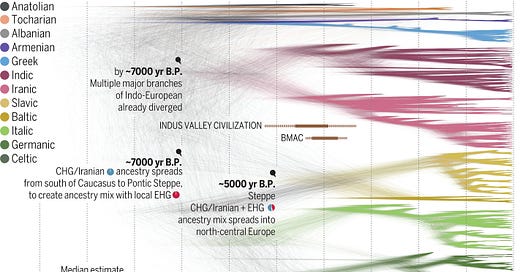Unveiling the Origins of Indo-European Languages Through a Novel Database
A recently conducted study offers a reconciliatory proposal aimed at resolving the longstanding dispute regarding the origins of this extensively prevalent language family.
Languages are the bedrock of human communication, carrying the echoes of our past and shaping our present. Indo-European languages, spoken by billions across the globe today, form one of the world's largest language families. The quest to uncover the origins of these languages has intrigued linguists, anthropologists, and historians for generations. A recent breakthrough1 comes in the form of a new language database that promises to narrow down the search for the first speakers of Indo-European languages, providing fresh insights into our linguistic heritage.
The Indo-European language family encompasses languages as diverse as English, Spanish, Hindi, Russian, and more. Despite their geographical and cultural dispersion, these languages share striking linguistic features that hint at a common ancestral origin. For example; throughout Eurasia, individuals use comparable terms to refer to the word "foot": "pied" in a café in Paris, "pāvn (پاؤں)" in a bazaar in Karachi, and "pṓda" in the mountains of Tajikistan. Similarly, when it comes to the number two, Hindi speakers employ "do," while it is believed that ancient Hittites used "dān." The challenge lies in pinpointing the time and place where these languages originated, as well as the migratory paths of their early speakers. This intricate puzzle has driven scholars to explore historical documents, archaeological records, and linguistic clues.

Keep reading with a 7-day free trial
Subscribe to Anthropology.net to keep reading this post and get 7 days of free access to the full post archives.


